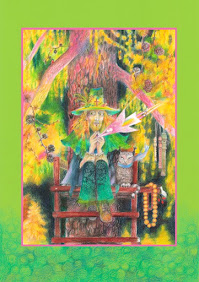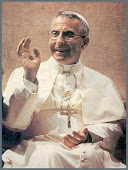Have returned from Holy Week celebrations in Jerusalem and the beach at Tel Aviv. Still in a state of shock from the experience, and not ready to blog about it yet, but here are some random thoughts.
Stayed in a wonderful Palestinian run hotel, the Jerusalem Panorama Hotel. Here is the view from my bedroom window, with the Old City walls and the Dome of the Rock in the distance, and the charming little Palestinian grocery down below - where the old owner eyed me with some suspicion, but whose young son could not stop grinning every time he waited on me:
Such a profound immersion in a rich multi-cultural, multi religious, multi - political experience. For the first time in over 50 years, Jewish Passover, Orthodox Easter and Western Christian Holy Week + Easter all coincided within the same week. My hotel was filled with Orthodox Christians from Eritrea and Ethiopia and Jews from Galilee, Baptists from Namibia - and a rather frightening group of intense black Anglicans from Uganda, whom I encounterd in the Garden Tomb, the Protestant alternative to the Church of the Holy Sepulchre.
I spent part of Good Friday morning and Easter Saturday eve - afternoon at the American Colony hotel, talking with Munther Fahmi in his revered bookshop. Munther is a Palestinian who has been living in Jerusalem for the past seven years on his US passport, but - though he was born in Jerusalem - he is now faced with expulsion from Israel by the authorities, who take a dim view of his progressive bookstore with everything available on the Middle East crisis one could possible want. I bought seven books from him and read them in the lobby of the hotel early Good Friday afternoon. The message was clear: One cannot come to Israel to celebrate the Holy Week mysteries of the Passover of the Lord without immersing oneself in the ongoing passover anguish of the Palestinians in Israel, a suffering that also consumes the Israelis as well. Read his story here at Jonathan Cook's website:
At 2pm I made my way down the Via Dolorosa, and by some miracle I managed to get inside the Church of the Holy Sepulcher right before it was closed to the public. The crush of people inside was frightening and I had to push my way vigorously into the Orthodox sanctuary, where I managed to find a seat on a bench next to some devout and very friendly Orthodox ladies. They all had large bags beside them, filled with provisions to last the long night until the great ceremony of the Miracle of the Holy Fire on Saturday at 2pm. I had neither the provisions nor the stamina to last the twelve hours sitting on that small bench (and what about using the toilet?). However, I was there for the tolling of the great bell at precisely at 3pm and the beginning of the very solemn Orthodox ceremony. Endless chants and songs, the blessing and incensing of the tomb and sealing of the entrance:
At one point in the ceremony, high pitched feminine screaming rang out in the area around the tomb, screaming such as I have never heard in my life, a piercing anguish and horror that pierced one's bones. It was the cry of anguish one would expect when a plane is crashing or a bomb is about to be expolded - which is what I feared was about to happen. There were many shouts of men, the sound of a scuffle, and these horrifying high pitched screams from women, containing within all of their decibles all of the pain and terror of the world. Israeli soldiers ran into the crowd (I did not really have a clear view, since the ornate entrance barrier of the Orthodox sanctuary barred part of the view.) The lady next to me got up and went over to the crowd at the entrance and stood on tip toe, trying to see what was happening. She came back to her seat and simply shrugged her shoulders at me, as if to say she could not make sense of it all. A frightening moment and the first time in my life I have heard such sounds - sounds, however, which have been all too common in Palestine and Iraq for many years.
At 5pm, I managed to push my way out of the church and through the police cordon outside, with crowds of angry pilgrims attempting to push their way into the church. I wandered down the alleys of the Old City to the Wailing Wall, which seemed an appropriate place to visit on Good Friday. And I was faced with this sight:
At one point in the ceremony, high pitched feminine screaming rang out in the area around the tomb, screaming such as I have never heard in my life, a piercing anguish and horror that pierced one's bones. It was the cry of anguish one would expect when a plane is crashing or a bomb is about to be expolded - which is what I feared was about to happen. There were many shouts of men, the sound of a scuffle, and these horrifying high pitched screams from women, containing within all of their decibles all of the pain and terror of the world. Israeli soldiers ran into the crowd (I did not really have a clear view, since the ornate entrance barrier of the Orthodox sanctuary barred part of the view.) The lady next to me got up and went over to the crowd at the entrance and stood on tip toe, trying to see what was happening. She came back to her seat and simply shrugged her shoulders at me, as if to say she could not make sense of it all. A frightening moment and the first time in my life I have heard such sounds - sounds, however, which have been all too common in Palestine and Iraq for many years.
At 5pm, I managed to push my way out of the church and through the police cordon outside, with crowds of angry pilgrims attempting to push their way into the church. I wandered down the alleys of the Old City to the Wailing Wall, which seemed an appropriate place to visit on Good Friday. And I was faced with this sight:
Saturday afternoon I went back to the Garden Tomb (where I had been the previous day) and there ran into the disturbing Anglican group from Uganda, making quite a loud noise in the garden with screaming and shouting and hand clapping. The very polite British manager of the garden had to come out to quiet them several times, after which they looked very affronted and angry as they paraded around the garden in the company of their bishop dressed in a very bright maroon cassock. They left the garden shortly after this, leaving a cloud of dark negativity behind them. I asked the director where this group was from, and he told me, "Uganda," with raised eyebrows. While one shouldn't stereotype on the basis of cultural assumptions, it is the Anglican Church of Uganda which has cut itself off from the North American Anglican communion over the issue of 'homosexuality." This group was frightening to observe, and while I regret my prejudices, they struck me almost to a 'man' as being very psychologically primitive. Not so the lovely Black Baptists from Namibia, friendly, charming, jolly, open hearted, each of them wearing their little white baseball caps with the green logo for "Covenant Tours." In this way, on Holy Saturday Eve, in the Garden Tomb, for one brief moment I felt I had encountered the dark stain which contributes to the homophobia of the Anglican Ugandan Church. But perhaps I am mistaken ???
Back at the hotel later in the evening, I spoke with the charming elderly ladies from Eritrea, all in their 60's, 70's and 80's, here on tour for the Holy Week festivities.
They were going out to their church at 9pm for the Easter Vigil, and were returning to the hotel at 2pm. I asked if I could join them and they laughed and said I would have a much better time joining the 'young Eritrean men,' for the ceremony of the Holy Fire at the Cave of the Tomb of Mary, down the hill adjacent to the Franciscan Church of Gethsemane. They could not have been more right. The experience was so joyful, so moving, so hilarious and humanly touching that it brought tears to my eyes. The tomb was packed with several thousand young me all in their twenties, as far as I could tell. No children, no teens and very men above the age of 30. There were also several women, clearly wives with babes in arms, but they constituted less than 10% of the whole group. I found myself surrounded by such joy and celebration and had to take many, many photos of couples of beautifully smiling men with their arms around one another - that I had no time to take photos of my own. Here are some poor attempts which do not capture the rapturous joy of this moment and these beautiful, friendly, overflowing young men. How humbling and inspiring to experience the Christian mystery celebrated in such a different way, far far from one's own rather tepid Catholic ritual. Speaking which, after leaving the beautiful men of the Eritrean Orthodox Church I wandered in with a group of Spanish pilgrims right into the Church of the Garden of Gesthesame for the Catholic Easter Eve Vigil - which was indeed moving and profound, partly because this pilgrim group was obviously from a single parish and were already united in spirit, with beautiful, heartfelt singing. Yet we could not match the boundless, overflowing, rapturous joy filling the Tomb of Mary next door and spilling out into the night.
Back at my hotel in the evening, I listening to the mournful tolling of the Holy Sepulcher bell, a profound sound which echoes over the Kidren Valley and Getheseme up until midnight. It was joined at 10:30 by the haunting sounds of the Muslim Muezzin from the Mosque next door. Such sounds echoeing all across the valley, haunting, beautiful, and inexpressibly romantic, tragic and sad.
The following morning, after celebrating Easter in the early dawn with the Sisters of Sion at their beautiful Church on the Via Dolorosa, Ecce Home, I took the bus to Tel Aviv and spent the day on the beach meditating on this profoundly moving spiritual pilgrimage, filled with such unexpected encounters and experiences. I've only briefly touched on the meaning of the trip for me, but put simply, one cannot celebrate the Resurrection of the Risen Lord, without immersing oneself in the very real sufferings of oppressed peoples everywhere - whether it be the Palestinians groaning under a 40 year occupation or gay people in Uganda cowering in fear of discovery of their basic identity.
The following Monday, I boarded the plane for Prague at Ben Gurion airport, vowing to return.

































